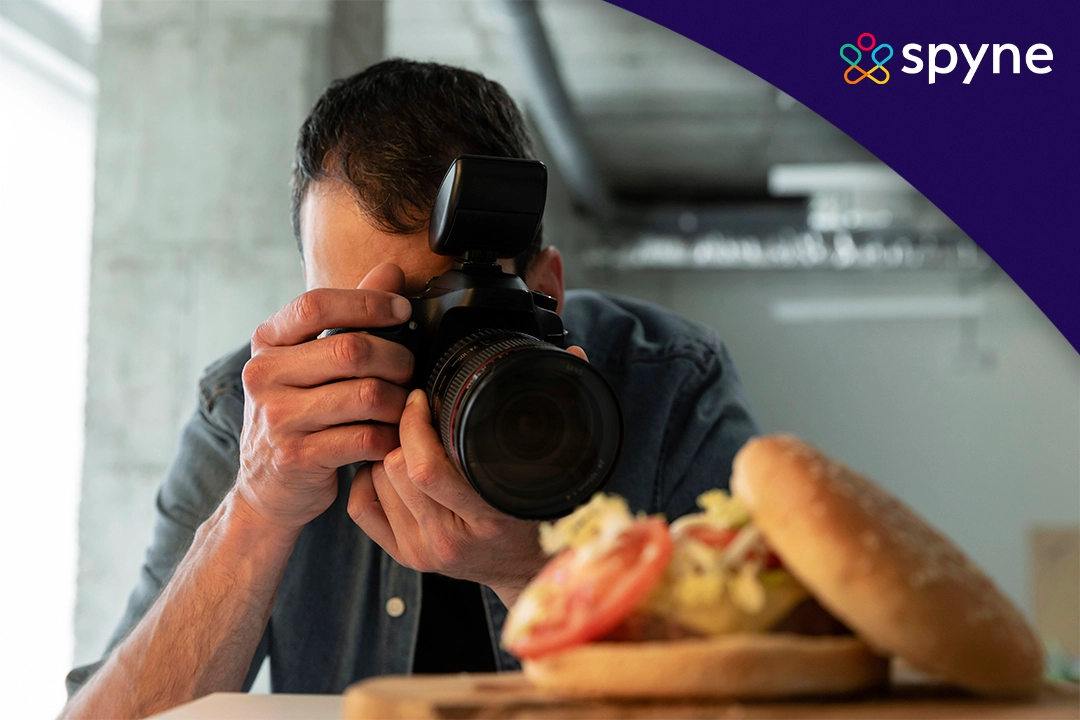Photography is the practice or the art of capturing an image with some light on it. Food photography is more than that; you must consider an image’s background, props, cutlery, and quality. You must brainstorm brilliant food photography ideas to infuse creativity into it and grab attention online.
There are plenty of food photographers in the world now, and to stand out from all of them, you must know some creative food photoshoot ideas.
13 Creative Food Photography Ideas for Your Next Photoshoot
Step into a whimsical realm where food becomes a canvas, and creativity knows no bounds. Get ready to witness the magic of culinary storytelling as we unveil a captivating collection of visually stunning food photographs.
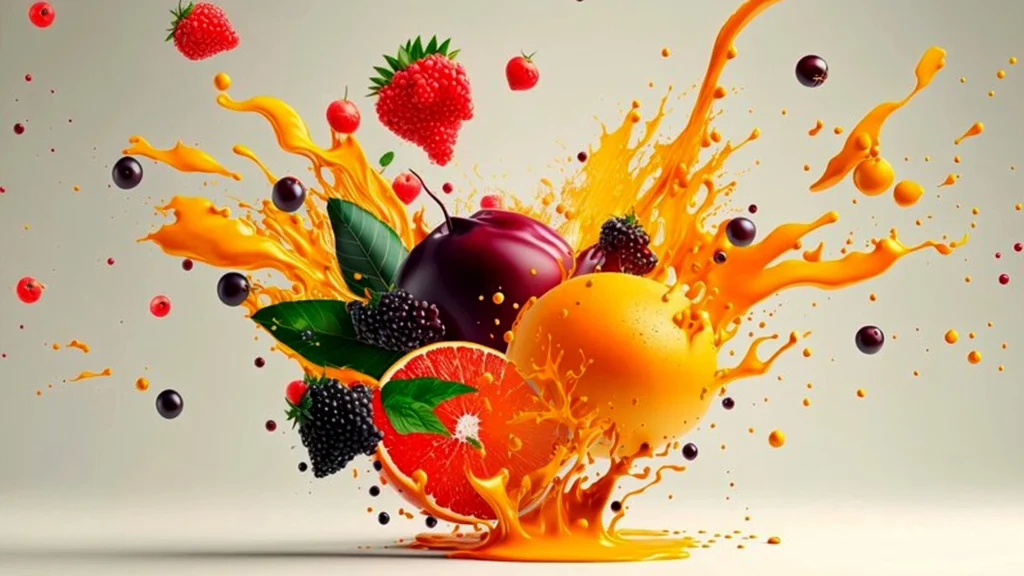
- Floating Ingredients: Capture various ingredients suspended mid-air for an ethereal effect.
- Edible Landscapes: Construct miniature food landscapes using ingredients to mimic mountains, trees, and lakes.
- Sweet Splash: Capture a dessert being dipped or drizzled with sauce, creating an enticing splash.
- Hidden Surprises: Conceal a surprising ingredient inside a dish and capture the moment it’s revealed.
- Food Portrait: Arrange ingredients to create a visually appealing portrait or shape.
- From Farm to Table: Showcase the food journey, from raw ingredients to a beautifully cooked dish.
- Melting Delights: Capture the gradual melting of ice cream or chocolate for a mouthwatering effect.
- Frozen in Time: Photograph ingredients suspended in ice cubes or frozen desserts for a cool and captivating shot.
- Food Palette: Arrange a variety of colorful foods to resemble an artist’s palette.
- Artistic Ingredients: Turn food into a canvas by painting edible dyes or sauces onto the dish.
- Infinite Reflections: Use mirrors or reflective surfaces to create an illusion of infinite repetitions of the dish.
- Food Patterns: Arrange ingredients in repetitive or symmetrical patterns for an eye-catching composition.
- Ingredient Explosion: Capture the moment ingredients burst out of a dish, creating a visually dynamic image.
These ideas should spark creativity and help you create visually stunning food photographs! Use your photos to tell stories about food and the people who love it. This allows you to create a more emotional and engaging connection with your audience.
Have fun experimenting and trying different ideas!
Use Reflections for Stylish Commercial Shots
Reflections can add a unique and stylish touch to restaurant photography, making the images stand out and capturing the viewer’s attention.
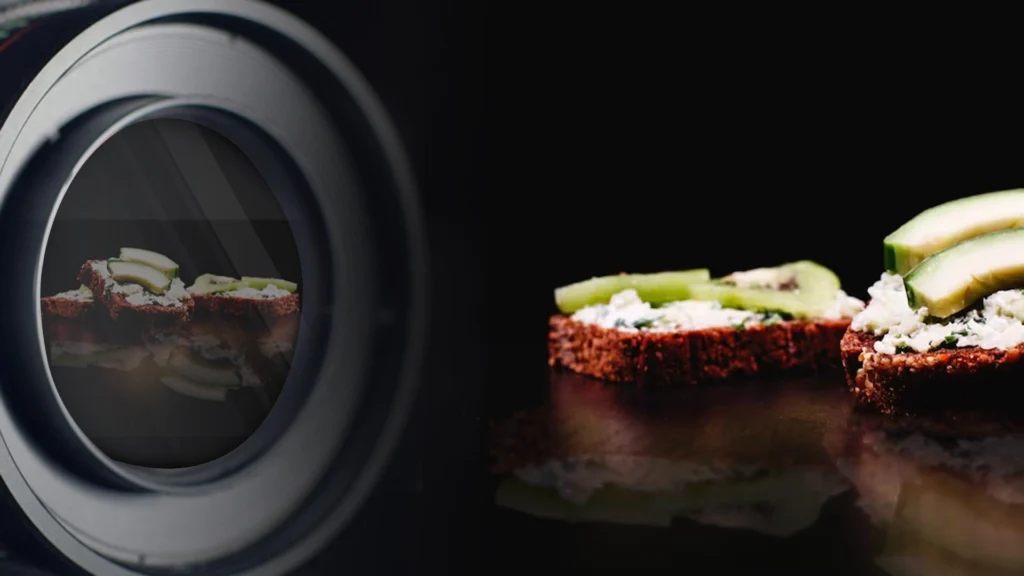
Here are some ideas to click a picture using reflections in your food photography:
- Shoot on a reflective surface: Shooting on a reflective surface, such as a shiny countertop or a mirror, can create a natural reflection of the food, adding depth and interest to the image.
- Use a reflective backdrop: A backdrop with a reflective surface, such as a metallic sheet or a glossy tile, can create a mirrored effect, highlighting the food and making it pop.
- Incorporate water: Adding water to the scene can create natural reflections, especially if you shoot from a low angle. Using a spray bottle to mist the food lightly for a more dramatic effect.
- Utilize glassware: Glassware such as wine glasses, jars, and bottles can create reflections of the food, adding an artistic touch to the image.
- Add metallic accents: Using metallic accents such as silverware, copper utensils, or brass candlesticks can create reflective surfaces that highlight the food and add interest to the image.
- Experiment with different lighting: Play with different lighting techniques, such as backlighting or side lighting, to create reflections on the food, giving it a more dynamic and unique look.
Remember, experimenting and having fun is the key to successful food photography with reflections. Try different angles, lighting, and surfaces until you find the perfect combination that highlights the food and creates a stunning image.
How to Do Food Styling? 20 Best Styling Tips
Food styling is the art of arranging and presenting food in an appealing and visually enticing manner for photography or other media purposes. Here are 20 steps to help you with food styling:
- Plan and gather inspiration for your desired food presentation.
- Choose suitable props that complement the food.
- Select fresh, high-quality ingredients as the foundation.
- Consider the composition and arrangement of the elements.
- Layer ingredients strategically to create depth and texture.
- Pay attention to color contrast for visual appeal.
- Use natural or artificial lighting to highlight the food.
- Diffuse harsh lighting to create a soft, flattering glow.
- Be mindful of shadows and highlights for dimension.
- Clean plates and utensils for a polished presentation.
- Adjust ingredients and remove imperfections with precision.
- Add finishing touches and small details for refinement.
- Utilize tools like tweezers or brushes for precise adjustments.
- Consider props or tricks to enhance the food’s appearance.
- Use toothpicks or skewers to hold ingredients together.
- Create steam or mist for a fresh, appetizing look.
- Brush oil on grilled food to enhance its shine.
- Work with a photographer or set up your camera for optimal shots.
- Experiment with different angles and focal lengths.
- Continuously practice and refine your food styling skills.
Dining style should reflect individual aesthetics and taste. There isn’t a correct or incorrect approach to this., so have fun and enjoy the process!
Reinvent Food Preparation Methods for New Ideas
Food preparation methods have come a long way over the years, with technological advancements, new ingredients, and changing tastes and preferences. It is essential to think outside the box to develop new ideas for food preparation methods. Here are some reinvented food preparation methods that could inspire new restaurant marketing ideas:
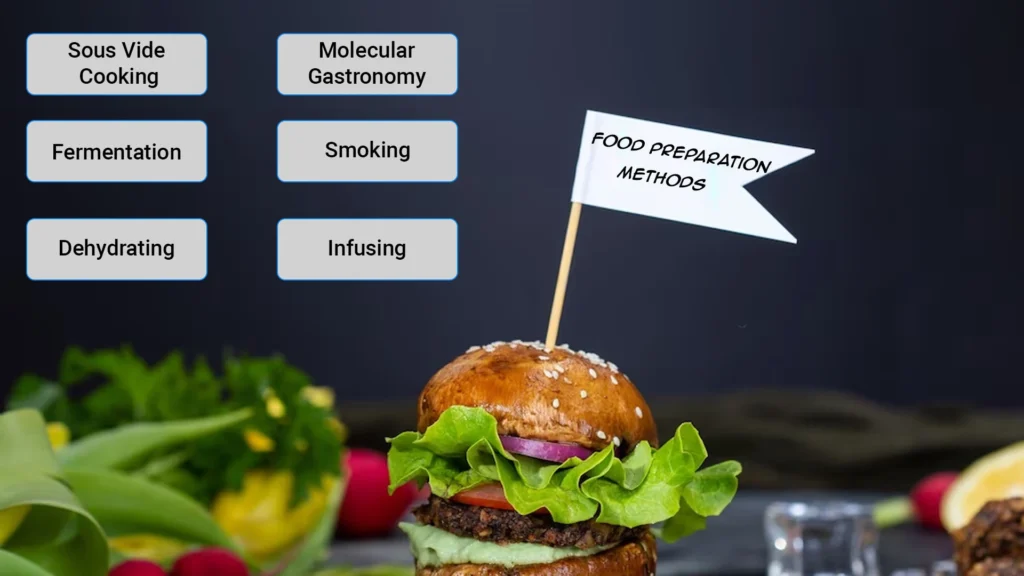
- Sous Vide Cooking: This method involves cooking food in a vacuum-sealed bag submerged in a water bath at a precise temperature. This technique allows food to cook evenly and retain its natural flavor and nutrients. Consider experimenting with different ingredients, spices, and herbs to create unique sous-vide dishes.
- Molecular gastronomy: This method uses science to create new textures, flavors, and food presentations. Technologies such as spheronization, foaming, and gels create dishes with incredible texture and visual appeal.
- Fermentation: Fermentation has been used for centuries to preserve food and improve its taste. Experiment with various fermentations such as lactose fermentation, yeast fermentation, and kombucha fermentation to create unique and flavorful dishes.
- Smoking: Smoking is a traditional cooking technique that adds flavor and complexity to dishes. Consider using different types of wood, spices, and herbs to smoke other foods, such as vegetables, fruits, and meats, to create unique smoky flavors.
- Dehydrating: Dehydrating food removes the moisture from it, creating a concentrated flavor and texture. Consider dehydrating different ingredients, such as fruits, vegetables, and meats, and using them in unique ways, such as creating vegetable powders, fruit leathers, or jerky.
- Infusing: Infusing involves steeping ingredients in liquid to extract their flavors. Consider experimenting with different liquids, such as oils, vinegar, and spirits, and different ingredients, such as herbs, spices, and fruits, to create unique infusions.
You can create unique dishes to surprise and delight your customers or guests by experimenting with different techniques, ingredients, and flavors.
Interesting Concepts for Your Food Photography
One concept that can add interest to food photography is storytelling. Instead of taking pictures of the food, capture the story behind the dish or the eating experience. This can include showing the ingredients used in a recipe, the cooking or preparation of a dish, or the people who will eat it.
Pictures of cakes, for example, can capture the moment a baker puts the finishing touches on or show a group of friends enjoying a cake at a party. Or you can capture the process of picking fresh berries for a cake or the environment in which a cake is being served.
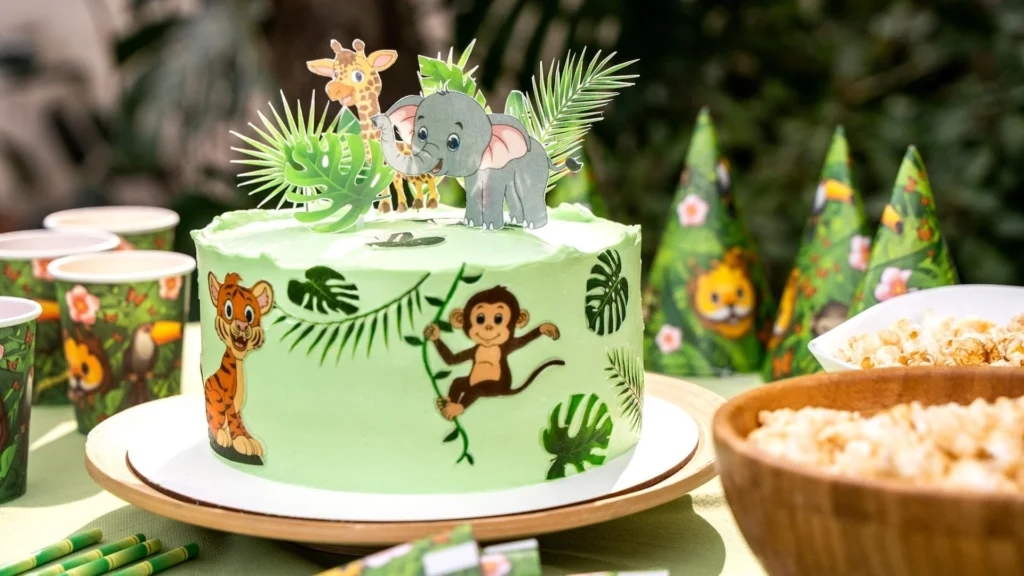
Adding a storytelling element to your food photos will engage your viewers and make them feel more connected to the food and emotions you showcase. This can help create more memorable and impactful images that tell a compelling story.
Unique Food Photography Ideas to Capture Delicious Shots
The essence of food photography is to make food look as delicious and appealing as possible. Here are some unique food photography ideas at home to help you capture mouth-watering shots.
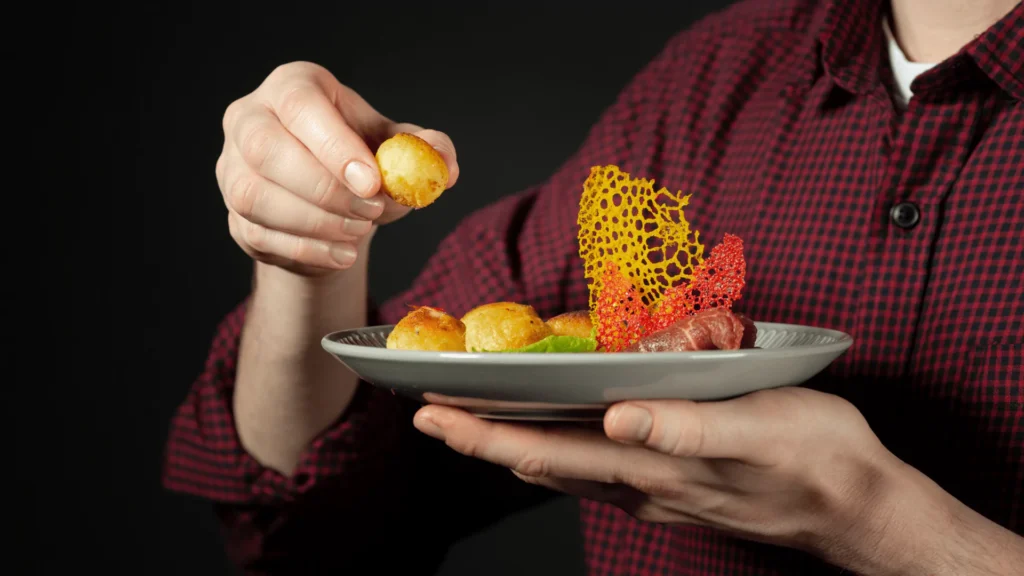
- Add human touch: Including hands or other body parts in food, photos can create a sense of scale and interest. It also helps convey the pleasure of eating.
- Creative use of props: Props can add interest and context to your food photography. Use vintage plates, dishes, or linens to add a unique touch to your photos.
- Taken from above: A popular trend in food photography is shooting from above, also known as “flat lay.” It can give your photos a clean and simple feel and is a great way to showcase various products.
- Lighting experiments: Lighting is the key to creating beautiful food photos. Use natural light or experiment with different types of artificial light to create different moods and effects.
- Add movement: Capturing motion in your food photos can help make your meals more dynamic and appetizing. Consider sprinkling herbs or pouring the sauce over dishes while filming.
- Storytelling: Use food photos to tell a story about a dish or experience. Consider taking photos of the ingredients, the cooking process, and the finished product.
Use these unique food photography ideas to create visually appealing and appetizing photos that will make your viewers want to reach out and grab a bite.
Capture the Viewer’s Attention with Food Acrobatics
Food Acrobatics is a unique and exciting way to engage your audience, whether on social media or in person. Here are some food photography tips for beginners using food juggling to create compelling content.
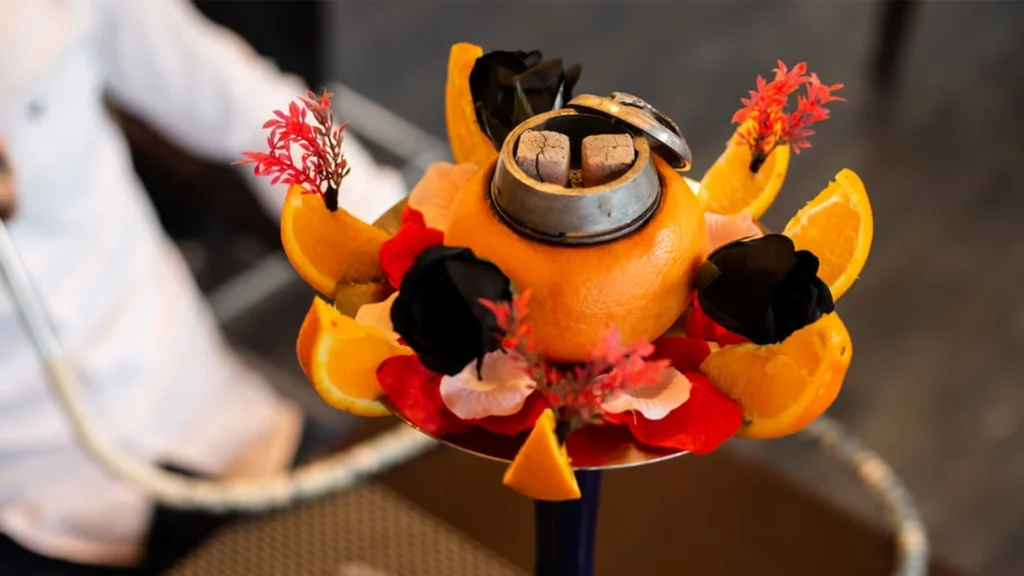
1. Start with a simple idea: Think about the food you want to use and how you want to handle it. Think about the characteristics of food, such as texture and consistency, and how you can use food to create exciting movements.
2. Practice, Practice, Practice: Like any skill, culinary acrobatics takes practice. Take your time and experiment with different techniques until you’re comfortable with the moves you want.
3. Use slow motion: Slow motion can add drama and excitement to your cooking stunt videos. It also allows the viewer to appreciate the movement and beauty of the food.
4. Add music: Music can enhance the drama of your acrobatic cooking videos. We recommend choosing tracks that match the tone and mood of your content.
5. Experiment with different angles: Shoot from different angles to capture the full effect of your food acrobatics. Close-up shots can help viewers appreciate details, while wide shots can show movement in its entirety.
6. Take Care: Always prioritize safety when handling food. Be careful when handling sharp objects and be aware of potential hazards.
7. Share Your Creations: Finally, share your food stunts with the world! Let others appreciate the beauty and creativity of your culinary stunts, whether on social media or in person.
Add Splashes for a Dynamic Image
Adding a splash or splatter to a dynamic image can be a great way to add energy, motion, and visual interest to an image. Here are the steps to add a splash to your image.
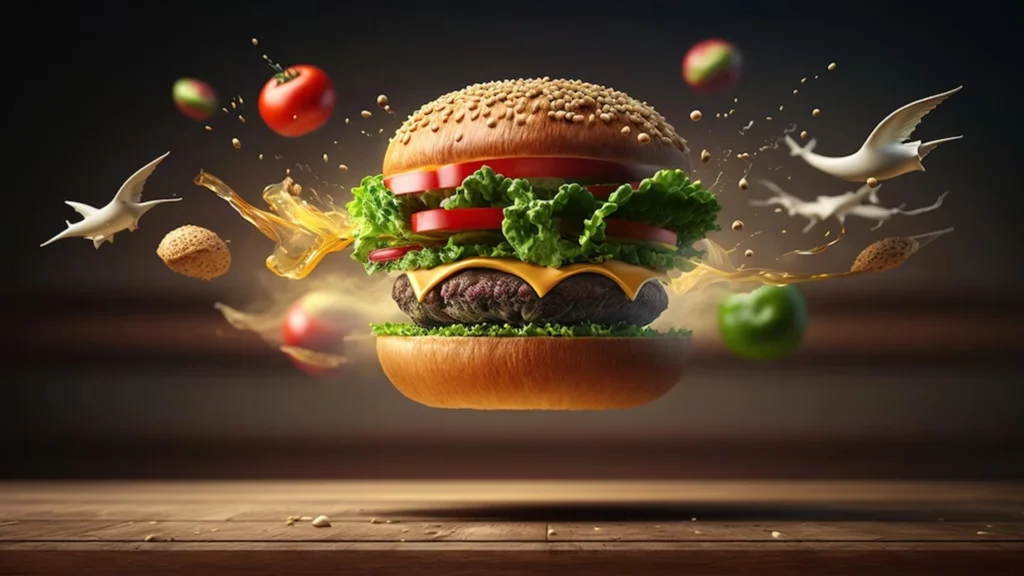
1. Select Image: Choose an image with dynamic movement or action, such as sports images, dance photos, or running shots.
2. Select splash screen type: Choose the splash screen type to add to the image. You can choose from various splatters, including water splatter, paint splatter, ink splatter, or other splatter effects.
3. Create Screen Saver: Use graphic design software or online tools to create screen saver effects. You can create splashes using brushes or splatter filters. Experiment with different splatter sizes, shapes, and colors until you find the perfect work for your image.
4. Add splash screen to image: Once you have created a splash screen, import it into your food image editing software and place it on the desired image. You can adjust the splatter’s height, position, and opacity to blend seamlessly into your image.
5. Refine Splash: Adjusts the color and brightness of the splash better to match the color and tone of the original image. You can also use layer masks or blending modes to refine the edges of the splash and make it look more natural.
6. Save & Export: When happy with your splash, save the image and export it to your preferred format.
If you are a food photographer, adding splashes to a dynamic image can add energy and visual interest to the image. You can create stunning images that capture the movement and action of your subjects with some experimentation and creativity.
Use Props to Create Fun Food Photography
Of course, I can definitely help you! Here are some ideas for fun food photography using props.
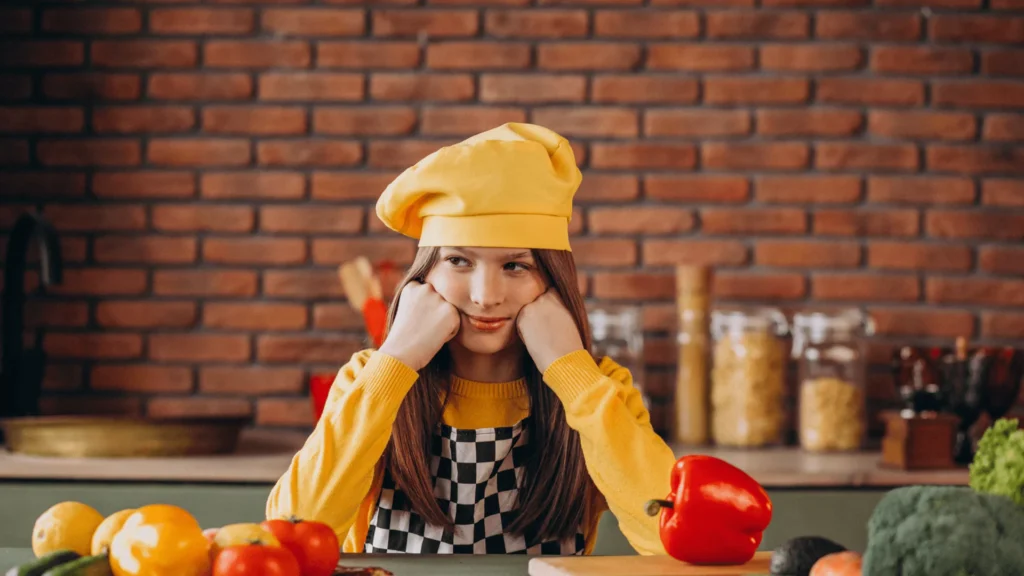
- Goggle Eyes: Add goggle eyes to your food items to make them stand out. Attach them to burgers, bananas, or pasta plates to give them a whimsical personality.
- Little Hat: Buy a little party hat and wear it over a meal to look like you’re celebrating a special occasion.
- Fake Mustache: Use a fake mustache to make food look ridiculous. Glue it to any fruit or vegetable for a fun effect.
- Oversized Utensils: Use oversized utensils such as oversized forks, spoons, or knives to create humorous size comparisons of utensils and food.
- Fun Signs: Create fun signs or messages for food. Use puns or witty jokes to make your audience laugh.
- Action Figures: Incorporate action figures or toys into food photography to create humorous scenarios. For example, you might have a toy dinosaur attacking cupcakes.
- Balloons: Use balloons to add color and fun to your food photos. Tie it to the handle of your coffee cup or place it next to your cookie dish.
Get creative and have fun with food photography props. Don’t be afraid to experiment and try different ideas until you find what works best for you!
Food Photography Ideas that You Should Try at Home
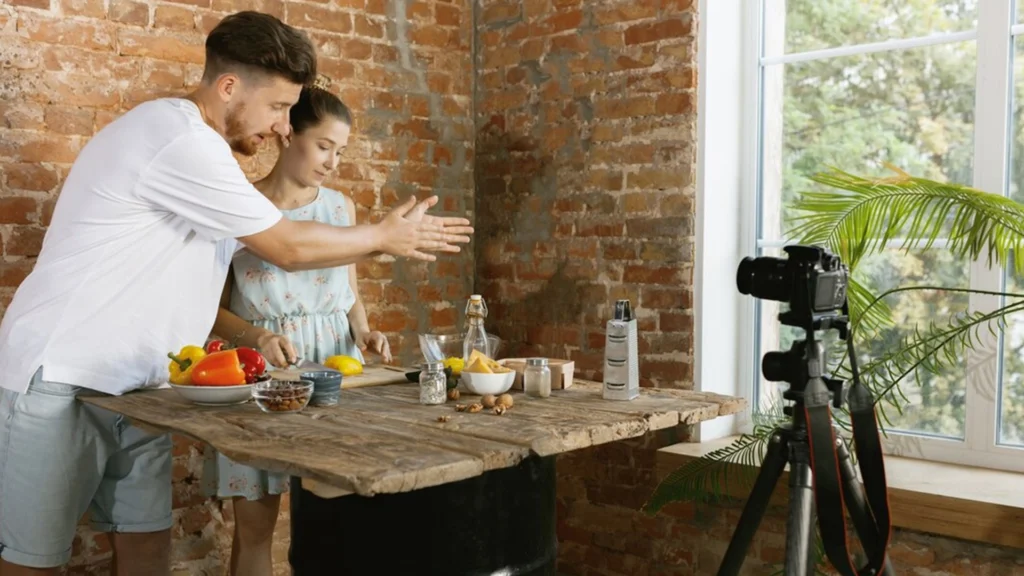
- Play with natural lighting: Try taking photos of your food in different areas of your home, such as near a window or outside, to capture natural light in different ways. Experiment with different times of day and see how the light changes.
- Get up close and personal: Take close-up shots of your food to capture all the delicious details, such as the texture, color, and shape of each ingredient. Use a macro lens if you have one, or get as close as possible with your camera or smartphone.
- Play with props and backgrounds: Use interesting props and backgrounds to add depth and character to your food photos. For example, you can use rustic wood planks as a backdrop or add twigs of fresh herbs as props.
- Use different angles: Don’t be afraid to try different angles when photographing food. Capture plates from different angles by shooting from above, side, or low angles.
- Add motion: Add motion to your food photos by filming steam rising from a hot plate or pouring sauce onto a plate. This will add an interesting extra element and make your photos more dynamic.
- Keep it simple: Sometimes, the best food photos are the simplest. We focus on the beauty of the material itself and strive to capture it in its natural state. Keep props to a minimum and let the food speak for itself.
- Use color: Experiment with different color palettes when taking pictures of food. For example, you can choose complementary colors to give your plate a striking look or a more subdued color scheme to create a cozy and relaxing atmosphere.
Most importantly, enjoy different techniques until you find your unique style!
Conclusion
Since we have seen that professional food photography is time-consuming and expensive, why not shift our focus to AI food photography software?
Spyne, which is the leading Artificial Intelligence (AI) based software, reduces all the human stress with no extra cost by providing the desired output of your food photograph using the following techniques:
- Consistency
- Speed
- Accessibility
- Cost-effective
- On-screen Guide
- Creative flexibility
AI instructions can help ensure that food is prepared and served most appropriately. AI can help create balanced and beautiful images by analyzing the composition of the images and suggesting changes in food placement.
Spyne camera recommendations provide real-time recommendations and feedback to food photographers, allowing them to adjust their processes on the fly. This helps save time and improve the overall image quality of rendering, ultimately leading to better results for the client or client viewing the image. Therefore, it is ranked as the best food photography app.
AI food photography offers many creative options, allowing users to experiment with different compositions, angles, and lighting setups to create unique, eye-catching images. This also reduces the cost and time for food photography setup.
Ultimately, the key to successful food photography is to be creative, innovative, and experimental while keeping the basic principles of composition, lighting, and style in mind. With practice and dedication, anyone can develop their food photography skills and create amazing and memorable images of delicious food and culinary creations.

